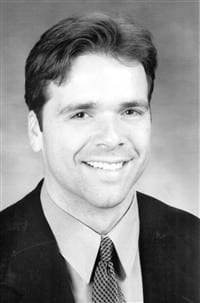All Access Healing Homes Is Quickly Building A Name For Itself In The Home Care Industry
Jeff Mason’s business, Healing Homes, started with a conversation around a water cooler.
A co-worker’s mother had recently been released from the hospital after suffering a stroke, but returning home didn’t seem viable. “She lived in a typical New England home,” Mason said, citing the narrow stairways, low ceilings, and furniture and fixtures that, once part of the charm of any farmhouse or Cape, were now obstacles to recovery.
Mason said he began studying the long-term care industry and looking at different options for elders and others in need of medical attention in the home to help address the problem, and that research, paired with Mason’s background in behavioral health and human psychology, soon led to a solution for the elderly woman that allowed her to return home to be with her family as she was cared for.
The answer was simple: if her home was no longer hospitable, her family would build her one that was.
“I had done research studies in modular homes, and I put that to work, with a little brainstorming, when my friend’s mother needed to come home,” he said.
Since his first foray into constructing modular living areas that would safely accommodate long-term patients as well as any medical equipment and amenities, Mason has created an extensive package of services offered through Healing Homes, based in Tiverton, R.I. He has continued his research into the long-term viability of his venture – even completing a research study with the Joint Center for Housing Studies at Harvard University – to better understand aspects of modified living, and is now focused on expanding his service to a wider customer base; Western Mass. is one of the next areas on the list Mason hopes to target.
Trading Spaces
Healing Homes construction projects, completed with the assistance of a network of architects, builders, vendors, and manufacturers that Mason collaborates with, can be as large as a full-scale modular addition to an existing home, or as small as some minor improvements to an existing room.
Mason said his primary goal, though, is to address both physical and emotional concerns associated with living with an illness or injury, and the daily challenges both caregivers and patients face.
“I wanted to help the caregiver as much as the patient,” he said, “and I wanted to pay attention to the mind, body, and spirit.”
Healing Homes offers a full menu of treatment and lifestyle options from which customers can pick and choose, including voice command, touch panel, and environmental control units that can open doors, adjust thermostats, switch on a television, or answer the telephone. Mason said the company can also offer teleconferencing between care recipients and care providers via video phones or other equipment, and telemedical support in the form of ‘intelligent clothing’ that monitors body temperature and other vitals signs.
Other products include telemonitoring equipment that takes weight, blood pressure, or other measurements and shares the results with a physician, caregiver or other authorized organization, and a cognitive monitoring system, which creates a 24-hour profile of a patient’s normal day-to-day behaviors, then compares daily movements to that baseline. If something seems out of the ordinary, for example if a patient who usually rises from bed at 7 a.m. is still sleeping at 10 a.m.—the system alerts a caregiver.
Mason said he views Healing Homes as a business that combines health care, housing, and social services into one product, and also said the housing option is a “compelling economic solution,” as well as another avenue for caregivers and patients looking for quality care environments.
“You can spend a little bit of money or a lot,” he said. “There are several options, all designed to make the best environment possible for the patient and offer peace of mind to caregivers.”
Healing Homes’ modular units are technically considered temporary structures, but after a treatment room is no longer needed, the space can be transformed into a home office, relaxation room, or exercise room if desired. Further, Mason maintains that the costs of constructing a Healing Home is competitive with the costs associated with moving to an assisted living facility or using a skilled home nurse service.
“If you look at skilled home nursing, costs can run between $55,000 and $100,000 a year,” Mason said. “With assisted living, people are paying an average of $3,000 to $4,000 a month when you add in à la carte items. Healing Homes can be financed for $500 a month. Plus, the structure becomes part of the asset base of real estate; it’s an investment for any property owner.”
Healing Homes are also tailored to each individual. Projects can include smaller in-house modifications, ‘life-cycle’ homes (large, multi-family complexes), and ECHO (Elderly Cottage Housing Opportunity) cottages — a particular design of modular homes geared toward individuals with long-term care needs that originated in Australia, where they were known as ‘Granny Flats.’
Life’s Work
Through his research, Mason also stumbled upon a movement called Plane Tree, which promotes the principles that a positive environment can be healing. Therefore, the design elements of all Healing Homes generally incorporate natural light and soft colors as much as possible.
“I took that idea and transported it into a residential setting rather than an institutional setting,” Mason said, noting that the Plane Tree model is used in several medical centers and nursing homes across the country. To offer an example of the modular homes’ design, he added that every Healing Home has a bay window as one of its defining features in order to best incorporate natural light into the design.
“That allows the person to be more connected with nature and be visually transported outside,” he said.
The Healing Homes model is currently in use in several areas of Southern New England, and Mason said his next goal is to expand his service into Western Mass. and Connecticut; a move he plans to focus on in 2005.
“Most people live in single-family homes with two floors, that prove to be inaccessible to them as soon as they encounter a chronic or acute medical disability,” he said. “It’s my goal to see these units across New England in the next few years, then eventually nation-wide.”


